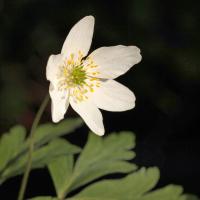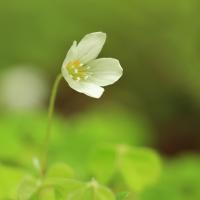With the island still in lockdown, there was again no meeting this week for the IOM Photographic Society. However, as with my article last week, lockdown has provided the opportunity to get some exercise by exploring some of our local hedgerows, glens and moorlands none of us living far from some wonderful countryside. This week, as we move into Spring, I have taken the opportunity to point out some of the wild flowers that are now coming into bloom and which provide both a welcome boost to our well-being and the perfect excuse to use our cameras. And for non-gardeners (like me), a very educational pursuit .
My co-conspirator and photographer in this venture was Beryl Quayle, an enthusiastic member of the Society and someone who has always been a ready source of both information and images of our wild life, particularly the insects and flowers. Her images are mainly taken on calm days using natural light though she also possesses a ring light (a type of circular flashgun which provides almost shadowless lighting). The ability to get down to ground level on hands and knees is definitely a requirement, and owning a true macro lens (for close-up images) is also helpful.
Her first image is of the marsh marigold or kingcup, a small to medium size perennial growing to a height perhaps of 18 inches or so, and a member of the buttercup family. It likes a wet environment such as boggy ground, ditches or wet woodland and flowers from mid-March until August. Its generic name is caltha palustris from the Greek for goblet-shaped and the latin of the marshes confirming its favoured habitat. The flowers are a glorious golden yellow and produce lots of both pollen and nectar attracting many insects including hoverflies during the summer.
The wood anenome is also a member of the buttercup family and easily recognised. It is a low-to-the-ground plant, growing only to 6inches or so in height, and enjoying the dappled sunlight in ancient deciduous woodland such as Ballaglass. It is very slow growing, spreading via root-like rhizomes underground rather than by seed. The flowers (in reality its sepals) have 5-8 lobes and are some of the first arrivals to show in the spring, being seen in March and April. The flowers are quite small and a delicate shade of white with purplish streaks, sometimes with a pink flush on the reverse side, and surrounded by a circle of bright yellow anthers as seen in the attached photo. Anenomes take their name from the Greek god of the wind Anemos who sent his namesakes in early spring to herald his arrival, which explains their other common name of wind flower.
Wood sorrel is initially similar in appearance to the wood anenome, low-growing with delicate white flowers, spreading via a rhizome, and also found in shady woodland locations. But the flowers have five petals, the stamens are white, and the leaves have a shamrock-like shape with three distinct lobes. Again, it is spring flowering, being found from April through to June. Interestingly, the leaves and flowers fold up at night and during rain.
Given the current Covid-19 situation, our programme is in abeyance and we are unable to provide a date for our next meeting, so please check our website www.iomps.com or our Facebook page for details of any updates or changes. Our meetings are held the St John Ambulance HQ on Glencrutchery Road, starting at 7:00 pm and are open to the public (non-members with a modest entry fee), and all will be given a very warm welcome.
The Isle of Man Photographic Society is supported by the Arts Council
Chris Blyth
CAPTIONS:
IMAGE 01: Kingcups by Beryl Quayle
IMAGE 02: Wood Anenome by Beryl Quayle
IMAGE 03: Wood Sorrel by Beryl Quayle



